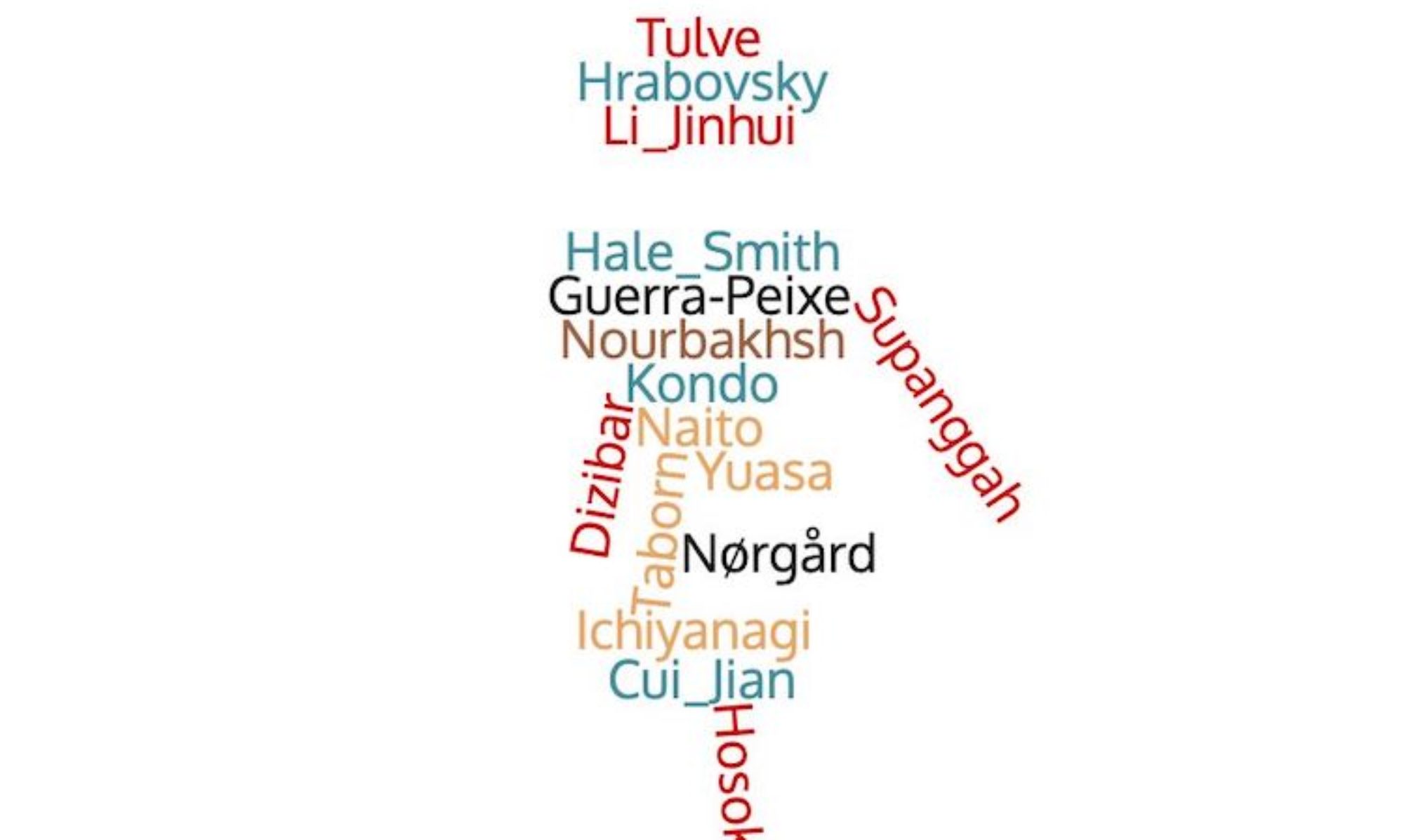By Mao Mengdan and Min Lingkang
This post is part of a series on 100 modern conservatory-trained Chinese composers from 1912 onwards who wrote symphonic, ensemble, and solo instrumental music using Western instruments, as well as choral and solo vocal music, adopting Western tonality or avant-garde techniques. They are regarded as key historical figures in and drivers of modern Chinese music history.
Sang Tong (1923-2011), born Zhu Jingqing in Shanghai, was a renowned Chinese music educator, composer, and music theorist. He served as the president and professor of the Shanghai Conservatory of Music. Sang began his musical education in 1941 at the then National Music Conservatory (later Shanghai Conservatory), studying composition under the German composer Wolfgang Fraenkel, but paused his studies in 1943. In 1946, he continued his studies at the conservatory under Jewish Austrian composer Julius Schloss and attended classes taught by composer Tan Xiaolin. In 1947, Sang composed the violin piece “Night Scene” and the piano piece “In That Distant Place,” which were among the earliest attempts by Chinese composers to employ atonal composition techniques. He also collaborated with Qu Xixian on the film music for “Nightclub” and “Sunny Days,” conducting the recordings himself.
At the height of the Civil War in 1948 with increasing instability in Shanghai, he moved to Northern Jiangsu and changed his name to Sang Tong to hide from Kuomintang, as he had taken part in Communist resistance against it during his youth. From the autumn of 1949, Sang Tong taught at the Shanghai Conservatory of Music for an extended period, serving as the head of the composition department, professor, vice-president, and president. In 1950, he composed the cello piece “Fantasia,” which was premiered in 1951 by the Shanghai Symphony Orchestra. The piece, performed by cellist Wang Lei at the World Festival of Youth and Students and later in Japan, the United States, and other places, has become part of the cello teaching repertoire in music schools.
Sang Tong’s writings include “Six Lectures on Harmony,” “The Theory and Application of Harmony,” “A Discussion on the Structure of Pentatonic Harmony,” and “An Introduction to Polytonal Writing Techniques.” He passed away on July 24, 2011, in Huadong Hospital in Shanghai at the age of 88.
One of his representative works, “Seven Piano Pieces on Inner Mongolian Folk Song Themes,” was composed in 1953, based on the melodies of Inner Mongolian folk songs. The pieces vividly portray Inner Mongolian people through poetic and picturesque musical expressions. The first piece, “Elegy,” is based on the folk songs “Sai Hen [塞很]” and “Dingker Zhabu [丁克尔扎布],” starting with a recitative style to convey the final words of a hero and ending with a solemn mass chorus of mourning. (Note: Several of these folk songs with titles that are proper names are known through their Chinese names, the hanyu pinyin transliteration of which is provided alongside the Chinese characters. We would appreciate the input of readers with knowledge of Mongolian on its transliteration using the Latin alphabet.) The second piece, “Friendship,” celebrates sincere and eternal friendship through the folk songs “Mandong Tonglage [满冻通拉格]” and “Four Seas.” The third piece, “Homesickness,” adapts the rhythm of the folk song “Xing’an Ridge” to express the deep longing for home and family. The fourth piece, “Prairie Love Song,” uses the folk song “Little Lover” in a variation treatment to depict the tender and passionate emotions of young lovers. The fifth piece, “Children’s Dance,” portrays the innocent and lively image of dancing children, based on the folk songs “Dinglangbin [丁朗彬]” and “Bengbo Cai [崩博菜].” The sixth piece, “Sorrow,” is a transformation of the folk song “Homesick,” expressing a mournful and plaintive mood. The seventh piece, “Dance,” is a lively and bold dance piece based on the folk song “Modegeng Anga [莫德格昂嘎],” creatively adapted to showcase the vibrant energy of the music. This work received a bronze medal at the 1957 World Festival of Youth and Students and has been recognized for its distinctive portrayal of Inner Mongolian folk music.
Here is a video link to Sang Tong’s music: https://www.bilibili.com/video/BV13b4y1R7dj?share_source=copy_web&vd_source=4681f0684a5c74dd125d397ca5882ba3
